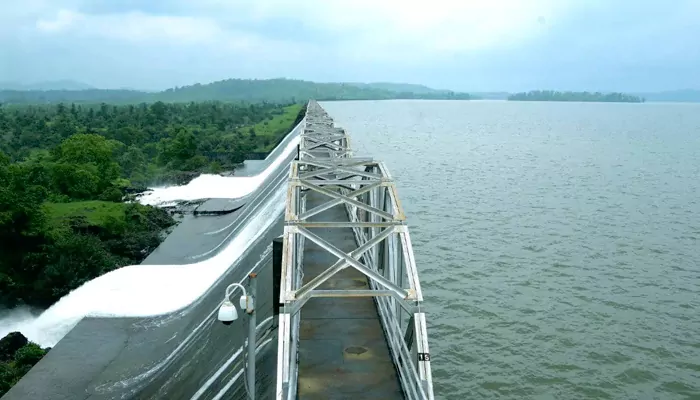Mumbai Witnesses Second-Wettest July: 150 cm Rain and Counting- How Overflowing Lakes are Boosting Water Stocks in the City
- Admin
- 1 year ago
- 3 minutes read

The financial capital of India, Mumbai, is witnessing the second wettest July ever with 1,505.5 mm of rainfall until now. The previous record was made last year with 1,771 mm of rainfall in the city, the highest recorded in the month ever.
With the downpour, the city’s water stocks are seeing an improvement. The seven lakes which supply water to the city, have risen to 58% of the total capacity which amounts to approximately 8.4 lakh million litres.
As the heavy rainfall leads to the overflow of lakes and important water bodies in the city, Mumbai’s water supply system is getting significantly impacted by this. The lakes reaching full capacity will not only ensure immediate and long-term benefits for both residential and commercial areas but also put a spotlight on issues like water rationing, water conservation and preparation for the dry season.
Ensuring Adequate Water Supply

Tansa Dam which Supplies Drinking Water to Mumbaikars
To meet its water supply needs, Mumbai has pinned hopes on the city’s network of lakes and reservoirs. Three of these primary water reservoirs are Tansa, Vihar and Tulsi. Due to the heavy Mumbai downpours, the city’s lakes have overflowed, which in turn is acting like a boon for the city’s residents. As the water level reaches its full capacity, both the commercial and residential water demands of the city can be met with ease. Not only that, with the overflowing water reservoirs, the people of the city are assured of an adequate supply of water for the foreseeable future. During the dry season, the city’s infrastructure is often stretched thin, and the situation worsens when the city has to rely on extreme sources to meet its water needs. This year’s monsoon will significantly ease the water problem faced by the locals.
Potential Reductions in Water Rationing
The lakes being at full capacity is associated with a massive benefit- a potential reduction in water rationing. During the dry season, the people of Mumbai have to resort to tough measures like water rationing to manage and balance limited water resources. Now with the lakes overflowing, Mumbaikars can look at a more consistent future where their water demands can be met with ease, without the need for taking measures like water rationing. This will benefit both residential and commercial areas, as they can now confidently rely on these reservoirs for a steady flow of water. This would enhance the quality of life and business as well.
Preparing for the Dry Season

Overflowing Vihar Lake
The overflowing lakes in Mumbai act as a shield against the forthcoming dry season. Mumbai witnesses a significant dip in rainfall post-monsoon. During the dry season, the abundance of water in the reservoirs will ensure that the locals are being met with an adequate supply of water, thus releasing them from the perils of parched weather. The preparation includes the storage of water, and guaranteeing the distribution systems are cared for and streamlined to diminish losses. Furthermore, it provides the opportunity for the authorities to execute a long-term plan of action for water management.
Tansa Lake in Mumbai became the second waterbody to overflow in July at 4:16 pm. This is followed by Tulsi Lake which overflowed on July 20. Tansa Lake has a water capacity of 1.45 lakh million litres. It supplies 455 million litres daily. However, Mumbai continues to face a 10pc water cut despite the improved water levels.












